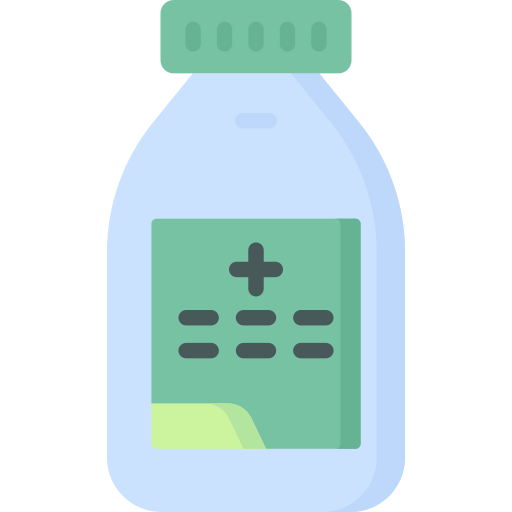
Phospholipids
45 mg/ml
ZAS Corporation
Product Details
Description
Endogenous pulmonary surfactant lowers surface tension on alveolar surfaces during respiration and stabilizes the alveoli against collapse at resting transpulmonary pressures. Deficiency of pulmonary surfactant causes Respiratory Distress Syndrome (RDS) in premature infants. Phospholipid replenishes surfactant and restores surface activity to the lungs of these infants. In vitro, Phospholipid reproducibly lowers minimum surface tension to less than 8 dynes/cm on the pulsating bubble surfactometer and Wilhelmy Surface Balance. In vivo, single Phospholipid doses improve lung pressure-volume measurements, lung compliance, and oxygenation in premature rabbit and sheep.
Phospholipids is indicated for prevention and treatment of Respiratory Distress Syndrome (RDS) (hyaline membrane disease) in premature infants. Prevention: In premature infants less than 1250 g birthweight, or with evidence of surfactant deficiency, give Phospholipids as soon as possible, preferably within 15 minutes of birth. Rescue: To treat infants with RDS confirmed by X-ray and requiring mechanical ventilation, give Phospholipids as soon as possible, preferably by 8 hours of age. Results from clinical studies suggest that little benefit is likely to be gained from giving Phospholipids to infants who have completed a prenatal course of corticosteroids, unless they develop RDS within the first 6-8 hours of life. The results of outborn compared to inborn infants were not analysed separately in the clinical trials.Outborn infants were distributed equally between the treatment groups and were not considered likely to bias the estimation of treatment effect. Therefore, there does not appear to be any evidence to suggest that outborn infants respond less well to treatment with Phospholipids.
Respiratory: lung consolidation, blood from the endotracheal tube, deterioration after weaning, respiratory decompensation, subglottic stenosis, paralyzed diaphragm, respiratory failure. Cardiovascular: hypotension, hypertension, tachycardia, ventricular tachycardia, aortic thrombosis, cardiac failure, cardio-respiratory arrest, increased apical pulse, persistent foetal circulation, air embolism, total anomalous pulmonary venous return. Gastrointestinal: abdominal distension, haemorrhage, intestinal perforations, volvulus, bowel infarct, loading intolerance, hepatic failure, stress ulcer. Renal: renal failure, haematuria. Haematologic: coagulopathy, thrombocytopenia, disseminated intravascular coagulation Central Nervous System: seizures. Endocrine/Metabolic: adrenal haemorrhage, inappropriate ADH secretion, hyperphosphataemia. Musculoskeletal: inguinal hernia. Systemic: fever, deterioration.
Phospholipids are intended for intratracheal use only. Phospholipids can rapidly affect oxygenation and lung compliance. Therefore, its use should be restricted to a highly supervised clinical setting with immediate availability of clinicians experienced with intubation, ventilator management and general care of premature infants. Infants receiving Phospholipids should be frequently monitored with arterial or transcutaneous measurement of systemic oxygen and carbon dioxide. During the dosing procedure, transient episodes of bradycardia and decreased oxygen saturation have been reported. If these occur, stop the dosing procedure and initiate appropriate measures to alleviate the condition. After stabilization, resume the dosing procedure. General: Rales and moist breath sounds can occur transiently after administration. Endotracheal suctioning or other remedial action is not necessary unless clear-cut signs of airway obstruction are present. Increased probability of post-treatment nosocomial sepsis in Phospholipids-treated infants was observed in the controlled clinical trials (See Table). The increased risk for sepsis among Phospholipids-treated infants was not associated with increased mortality among these infants. The causative organisms were similar in treated and control infants. There was no significant difference between groups in the rate of post-treatment infections other than sepsis. Use of Phospholipids in infants less than 600 g birth weight or greater than 1750 g birth weight has not been evaluated in controlled trials. There is no controlled experience with use of Phospholipids in conjunction with experimental therapies for RDS (eg. high-frequency ventilation or extracorporeal membrane oxygenation). No information is available on the effects of doses other than 100 mg Phospholipidss / kg, more than four doses, dosing more frequently than every 6 hours, or administration after 48 hours of age.
Overdosage with Phospholipids has not been reported. Based on animal data, overdosage might result in acute airway obstruction. Treatment should be symptomatic and supportive. Rales and moist breath sounds can transiently occur after Phospholipids is given, and do not indicate overdosage. Endotracheal suctioning or other remedial action is not required unless clear-cut signs of airway obstruction are present.
Cholagogues, Cholelitholytics & Hepatic Protectors, Pulmonary surfactants
Store unopened vials at refrigeration temperature (2-8°C). Protect from light. Store vials in carton until ready for use. Vials are for single use only. Upon opening, discard unused drug.
-
Support 24/7
Call us anytime -
100% Safety
Only secure payments